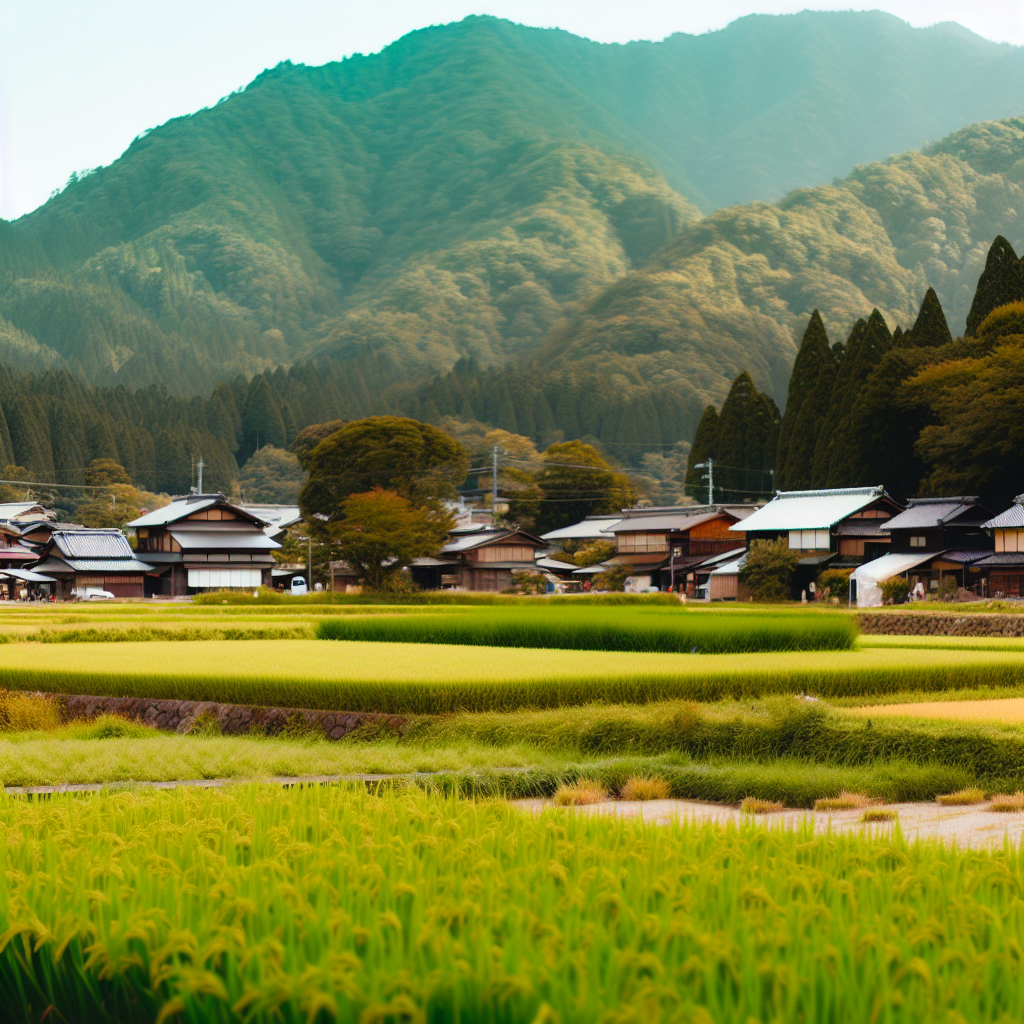This article offers a captivating exploration of Japan’s rural treasures, focusing on authentic experiences that reveal the cultural richness and serene beauty of hidden villages like Nakadate. It sheds light on intergenerational heritage, traditional festivals, and the unique lifestyle that defines the Japanese countryside.
The Enchanting Allure of Hidden Japan
Traveling to hidden gems like Nakadate village invites explorers to experience Japan’s lesser-known cultural tapestry. The allure of off-the-map regions lies in the authenticity they provide—where local customs flourish beneath the radar of typical tourist trails. Here, visitors connect with the timeless narratives woven into daily life, from communal agricultural practices to vibrant seasonal festivals. As travelers seek meaningful encounters, these tranquil landscapes resonate deeply, offering insights into intergenerational heritage, mindful traditions, and the rich storytelling of community life, all amidst serene vistas.
Embracing Rural Japanese Culture and Lifestyle
In Nakadate, daily life unfolds like a beautifully woven tapestry of agrarian heritage and communal spirit. Villagers engage in time-honored practices, from rice planting to crafting traditional crafts, offering visitors an authentic glimpse into their routines. Community-centered tourism flourishes here, where tourists actively participate in local festivals, learning the rich folklore that shapes their identity. This mindful approach fosters cross-cultural understanding and allows travelers to forge genuine connections with the rhythm of rural Japan. Embracing the enduring wisdom of these practices enriches one’s experience and cultivates a deeper appreciation of the Japanese countryside lifestyle.
Cultural Preservation and Intergenerational Heritage
In Nakadate, the preservation of cultural rituals thrives through intergenerational exchanges, where elders impart local wisdom, fostering a connection to the past. Mindful travel encourages visitors to experience traditions firsthand, engaging in daily practices such as rice planting or handmade crafts. These moments weave a rich tapestry of regional identity storytelling, where every local story enhances communal bonds. This focus on authentic experiences elevates Nakadate’s unique narrative, allowing travelers to explore the essence of timeless Japan while promoting sustainable community-centered tourism.
Traditional Festivals: Celebrating Life and Legacy
In Nakadate, traditional festivals illuminate the deep-seated heritage that binds the community. These vibrant celebrations embody Japan’s local wisdom, offering a glimpse into agrarian traditions and seasonal rhythms. Festivals such as the Nakadate Fire Festival serve as a canvas for storytelling, where age-old rituals are passed down through generations. Participants don intricate costumes, echoing their ancestors’ spirits, while sharing folklore and local delicacies. This communal experience fosters cultural preservation, inviting travelers to connect authentically with Nakadate’s rich tapestry of life, celebrating both the past and present.
Nature, Spirituality, and Inner Reflection in Rural Japan
In the serene expanses of Nakadate, nature and spirituality intertwine, creating a tranquil backdrop for introspection. Here, the rolling hills, swaying rice paddies, and ancient trees are not just landscapes; they are living narratives of agrarian traditions and spiritual practices. Locals engage in mindful travel, utilizing rituals like Shinto purification to connect profoundly with their environment. This harmonious existence encourages visitors to slow down, sip matcha while overlooking serene views, and embrace the peaceful rhythms of rural life, fostering both personal reflection and community connection.
In a Nutshell
Embracing the slower pace of rural Japan unveils profound cultural insights and spiritual serenity. Immersive experiences in places like Nakadate offer travelers a refreshing perspective and a deeper understanding of Japan’s rich cultural tapestry.

Leave a Reply